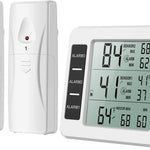You have no items in your shopping cart.
The Crucial Role of Waste Transfer Stations
Waste management is a pressing concern in our modern society, with the ever-increasing amount of waste generated. To address this issue, waste transfer stations have emerged as key players in the efficient and sustainable management of waste. These stations serve as vital hubs where waste is collected, sorted, and redirected to appropriate disposal facilities. In this article, we will delve into the world of waste transfer stations, exploring their functions, benefits, and their pivotal role in streamlining waste management processes.
What is a Waste Transfer Station?
A waste transfer station is a facility specifically designed to handle, sort, and manage different types of waste. Acting as a central collection point, waste transfer stations receive waste from various sources such as residential areas, commercial establishments, and industrial sites. These facilities play a crucial role in ensuring proper waste disposal and recycling by consolidating waste before it is transported to final disposal sites or recycling centers.
Functions of a Waste Transfer Station
-
Collection and Consolidation: Waste transfer stations receive waste from multiple collection points and consolidate it in one location. This facilitates easier handling and transportation to appropriate disposal or recycling facilities.
-
Sorting and Segregation: Waste materials arriving at transfer stations are sorted and segregated based on their composition and recyclability. This process ensures that different waste streams are directed to suitable treatment or recycling centers.
-
Safety Measures: Waste transfer stations adhere to strict safety protocols to minimize environmental and health hazards. They implement proper waste containment measures, including spill control, to prevent pollution and protect workers and the surrounding community.
-
Quality Control: Waste materials passing through transfer stations are monitored to ensure compliance with regulations and guidelines. Quality control measures are implemented to identify hazardous waste, monitor recycling rates, and maintain high standards of waste management.
-
Transfer to Disposal Facilities: Once waste has been sorted and processed, it is efficiently transported to final disposal facilities such as landfills, incinerators, or composting sites. Waste transfer stations play a crucial role in facilitating this transfer process.
Benefits of Waste Transfer Stations
-
Efficient Waste Management: Waste transfer stations streamline waste management processes by centralizing waste collection and sorting operations. This increases operational efficiency and reduces the strain on individual collection points.
-
Optimized Resource Recovery: With effective sorting and segregation, waste transfer stations maximize resource recovery through recycling and composting. Valuable materials are extracted, reducing the need for raw material extraction and promoting a circular economy.
-
Reduced Transportation Costs: By consolidating waste in one location, waste transfer stations minimize the distance and frequency of waste transportation to disposal or recycling facilities. This results in reduced fuel consumption, lower emissions, and cost savings.
-
Enhanced Environmental Protection: Waste transfer stations contribute to environmental protection by ensuring proper waste containment and preventing pollution. They play a critical role in safeguarding ecosystems, water sources, and public health.
-
Promotion of Sustainable Practices: Waste transfer stations actively promote sustainable waste management practices, encouraging recycling, composting, and waste reduction initiatives. They serve as educational centers for raising awareness about responsible waste disposal.
Frequently Asked Questions (FAQs)
Q1: What types of waste can be handled at a waste transfer station? A1: Waste transfer stations can handle a wide range of waste, including municipal solid waste, construction and demolition debris, recyclables, and hazardous waste.
Q2: Are waste transfer stations environmentally friendly? A2: Yes, waste transfer stations prioritize environmental protection by implementing proper waste containment measures and promoting recycling and resource recovery.
Q3: How do waste transfer stations contribute to recycling efforts? A3: Waste transfer stations sort and segregate waste, identifying recyclable materials that can be redirected to recycling centers. This helps maximize recycling rates and reduces the amount of waste sent to landfills.
Q4: Are there any regulations governing waste transfer stations? A4: Yes, waste transfer stations are subject to regulations and permits that ensure compliance with safety, environmental, and health standards. These regulations vary depending on local and regional requirements.
Q5: Can individuals or businesses directly dispose of waste at waste transfer stations? A5: Waste transfer stations primarily handle waste collection from designated collection points. Individual or business waste disposal typically occurs through curbside collection or specific drop-off locations.
Q6: How can waste transfer stations help in reducing illegal dumping? A6: By providing accessible and convenient waste disposal options, waste transfer stations discourage illegal dumping. They offer a safe and regulated alternative for individuals and businesses to dispose of their waste.
Conclusion: Streamlining Waste Management with Waste Transfer Stations
Waste transfer stations have emerged as indispensable components of effective waste management systems. These facilities efficiently handle waste collection, sorting, and redistribution, ensuring proper disposal and resource recovery. By promoting recycling, optimizing transportation, and enhancing environmental protection, waste transfer stations play a vital role in shaping a sustainable future. Embracing the advantages of waste transfer stations enables us to reduce waste, protect our environment, and pave the way for a cleaner and greener world.








